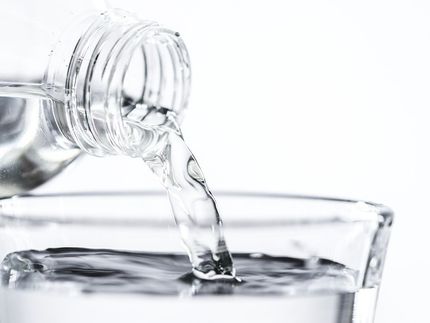Excessive fluid consumption: habit or hormonal disorder?
Which test provides a reliable diagnosis?
People who drink more than three liters of fluid a day may be suffering from a rare hormone deficiency. For many, however, it is just a harmless habit. Failing to differentiate the two correctly can be fatal, so researchers have been investigating what kind of test delivers a reliable diagnosis.
In most cases, drinking excessive amounts of fluid, known as polyuria-polydipsia syndrome, either arises out of habit over time or is concomitant with a psychological illness. In rare cases, however, it can be caused by vasopressin deficiency. This hormone, released by the pituitary gland, regulates the body’s water and salt content. People with vasopressin deficiency cannot concentrate their urine, causing them to lose large quantities of fluid and to feel very thirsty.
It is extremely important to differentiate between a “harmless” form of excessive fluid ingestion and vasopressin deficiency: in the first case, those affected receive behavioral therapy to help them reduce their fluid intake gradually. People with vasopressin deficiency, however, are given the hormone vasopressin. If a patient is mistakenly treated with vasopressin, it can lead to water intoxication, which can be life-threatening.
Should we test with salt or arginine?
Over the past few years, the two research group leaders Professor Mirjam Christ-Crain and PD Dr. Julie Refardt, together with a number of national and international centers, have been working intensively on testing methods to distinguish between these two disorders. They have found that a test that stimulates vasopressin release via a highly concentrated salt infusion is very reliable. “However, due to the resulting increase in salt concentration, constant monitoring is necessary, including half-hourly measurements of the salt levels in the patients’ blood,” explains Professor Christ-Crain.
A simplified and more easily tolerated test uses an infusion of arginine. Arginine, an essential amino acid, also stimulates the release of vasopressin and was shown to deliver a reliable diagnosis.
Clarity in diagnostics
With an international team, Christ-Crain and Refardt have now performed a direct comparison between the two tests and have published the results in the New England Journal of Medicine. The study, involving 158 participants, shows that the salt infusion resulted in a correct diagnosis for over 95 percent of patients. The test that uses arginine infusion, however, only led to a correct diagnosis in just under 75 percent of cases.
Dr. Refardt sums up: “In view of these results, we recommend the salt infusion test as the gold standard for reliable differentiation between polydipsia and vasopressin deficiency.”
Original publication
Julie Refardt, Cihan Atila, Irina Chifu, Emanuele Ferrante, Zoran Erlic, Juliana B. Drummond, Rita Indirli, Roosmarijn C. Drexhage, Clara O. Sailer, Andrea Widmer, Susan Felder, Andrew S. Powlson, Nina Hutter, Deborah R. Vogt, Mark Gurnell, Beatriz S. Soares, Johannes Hofland, Felix Beuschlein, Martin Fassnacht, Bettina Winzeler, Mirjam Christ-Crain; "Arginine or Hypertonic Saline–Stimulated Copeptin to Diagnose AVP Deficiency"; New England Journal of Medicine, Volume 389
Most read news
Original publication
Julie Refardt, Cihan Atila, Irina Chifu, Emanuele Ferrante, Zoran Erlic, Juliana B. Drummond, Rita Indirli, Roosmarijn C. Drexhage, Clara O. Sailer, Andrea Widmer, Susan Felder, Andrew S. Powlson, Nina Hutter, Deborah R. Vogt, Mark Gurnell, Beatriz S. Soares, Johannes Hofland, Felix Beuschlein, Martin Fassnacht, Bettina Winzeler, Mirjam Christ-Crain; "Arginine or Hypertonic Saline–Stimulated Copeptin to Diagnose AVP Deficiency"; New England Journal of Medicine, Volume 389
Organizations
Other news from the department science

Get the life science industry in your inbox
By submitting this form you agree that LUMITOS AG will send you the newsletter(s) selected above by email. Your data will not be passed on to third parties. Your data will be stored and processed in accordance with our data protection regulations. LUMITOS may contact you by email for the purpose of advertising or market and opinion surveys. You can revoke your consent at any time without giving reasons to LUMITOS AG, Ernst-Augustin-Str. 2, 12489 Berlin, Germany or by e-mail at revoke@lumitos.com with effect for the future. In addition, each email contains a link to unsubscribe from the corresponding newsletter.






















































